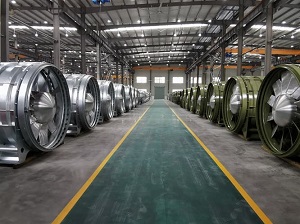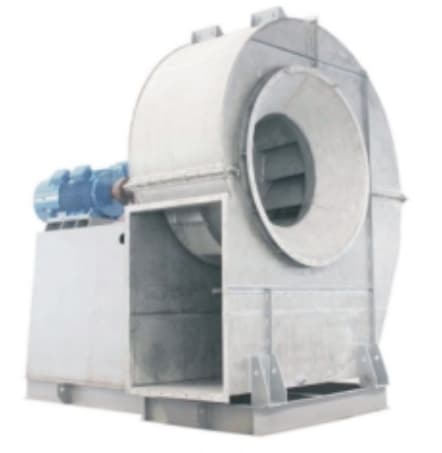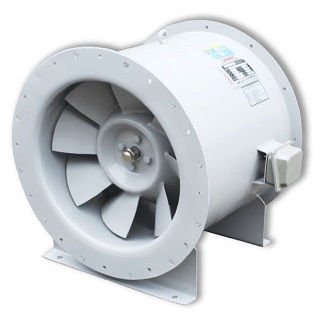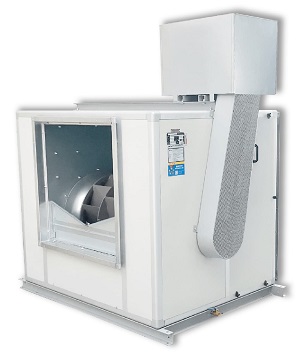Subway Ventilation Fan: Unsung Hero of Underground Air Quality
Subway systems are the lifelines of urban mobility, transporting millions of passengers daily beneath bustling cities. But what keeps these underground environments breathable, safe, and operable in emergencies? The answer lies in a critical yet often overlooked component: the subway ventilation fan. These powerful industrial fans are engineered to ensure adequate air circulation, remove heat and pollutants, and respond effectively in the event of fire or smoke.
For leading ventilation equipment manufacturers like Zhejiang Shuangyang Fans Holding Co., Ltd, subway ventilation fans are a core product category that combines high performance, durability, and strict compliance with safety standards.
Function of Subway Ventilation Fans
Subway ventilation fans serve multiple vital functions:
Normal Ventilation:
To maintain air quality, these fans extract heat generated by trains and electrical systems, and dilute pollutants such as carbon dioxide (CO₂), nitrogen oxides (NOₓ), and particulate matter.
Emergency Ventilation:
In the event of a fire, they work to extract smoke, maintain tenable conditions for evacuation routes, and support the operation of firefighting systems. Reversible Fans: Capable of bidirectional airflow, they are vital for emergency smoke extraction, allowing air to flow either toward or away from the incident site as needed.
Pressure Control:
By regulating airflow and pressure, subway fans help avoid pressure surges in tunnels and stations, enhancing passenger comfort and protecting infrastructure.
Temperature Management:
They prevent overheating of electrical components, especially in warmer climates or deep tunnel environments.
According to the U.S. Department of Transportation’s Federal Transit Administration (FTA), tunnel ventilation systems must be designed to handle “fire and life safety, smoke control, and environmental ventilation needs” simultaneously, often requiring fans to operate in high temperatures for extended periods.
Engineering Challenges and Solutions
Designing and manufacturing subway ventilation fans involves overcoming numerous engineering challenges:
High-Temperature Resistance:
Fans may be required to operate continuously at 250°C or higher for over 1 hours during emergencies. And even requests 300°C or 400°C for 2 hours in higher European Standards EN12101-3.
Low Noise Emission:
Since most fans are located near passenger areas, noise suppression through silencers and vibration isolators is essential.
Redundancy and Reliability:
Subway systems demand 24/7 reliability, often with N+1 or N+2 redundancy configurations to prevent failure.
Corrosion and Moisture Protection:
Underground environments can be highly humid and corrosive, requiring fans to be coated with anti-corrosion materials and use IP55+ rated motors.
Our factory rigorously follows international standards, which define the requirements for smoke and heat control systems. SHUANGYANG FAN’s subway ventilation fans have been deployed in major metro projects across China.
By customizing fan diameter, blade pitch, motor type, and control logic, we meet specific metro tunnel geometries and airflow performance targets of each project, based on our advanced Metro Tunnel Fan Production Base.
Smart Integration and Digital Monitoring
Modern subway ventilation systems are increasingly integrated with Building Management Systems (BMS) and tunnel fire detection networks. Subway fans can be equipped with:
-
VFD (Variable Frequency Drive) motors for energy-efficient speed control
-
Temperature and vibration sensors for predictive maintenance
-
Remote monitoring interfaces for centralized control
These features help reduce energy consumption while ensuring rapid, intelligent responses in dynamic ventilation scenarios.
Conclusion
Subway ventilation fans are not merely optional accessories—they are essential to the safety, comfort, and operational continuity of any underground transit system. From daily ventilation to life-critical smoke extraction, their role cannot be overstated. As cities expand and metro networks grow denser and deeper, the demand for intelligent, durable, and energy-efficient subway ventilation solutions will only increase.
Selecting a qualified manufacturer is critical. A reliable subway fan must pass performance tests, fire resistance certification, and long-duration operation assessments. At SHUANGYANG FAN, each subway fan undergoes strict factory acceptance testing (FAT), ensuring airflow, pressure, temperature resistance, and noise levels meet or exceed contract specifications. We also support OEM and project-based customization to meet evolving needs.
Note: The content of the article cannot avoid omissions and errors. Welcome to propose corrections.
 Subway Ventilation Fan: Unsung Hero of Underground Air Quality
Subway Ventilation Fan: Unsung Hero of Underground Air Quality
 Brief Intro of Induced Draft Fan (ID Fan)
Brief Intro of Induced Draft Fan (ID Fan)
 Brief Intro of Mixed Flow Fan
Brief Intro of Mixed Flow Fan
 Brief Intro of Centrifugal Fan
Brief Intro of Centrifugal Fan

